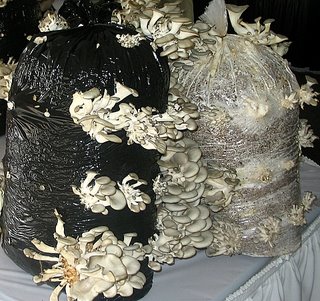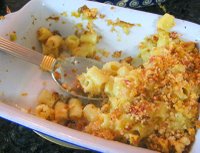 When I first moved to the Northeast for school / work, I moved to Kennett Square, PA – otherwise known as “The Mushroom capital of the World.” This weekend, I went to the Kennett Square Mushroom Festival.
When I first moved to the Northeast for school / work, I moved to Kennett Square, PA – otherwise known as “The Mushroom capital of the World.” This weekend, I went to the Kennett Square Mushroom Festival.
Kennett Square and the immediate surrounding area in Southeastern, PA produce 40 percent of the mushrooms consumed in the United States. Most of these mushrooms get slapped with a sticker from Dole - the main distribution company - so don't disclose their PA origin.
Mushroom production in the area started more than a century ago with Quakers growing mushrooms underneath carnation beds. Italian immigrants were then employed in mushroom farms. Now, the descendents of those Italians own most of the mushroom houses and employ mostly Mexican immigrants. Mexicans, though, are beginning to own and operate their own farms.
Having lived in Kennett Square, PA and Avondale, PA for three years, I know what mushroom farms smell like. It’s not pleasant, if you’re wondering. Imagine a nose burning perfume of manure, rubber, and asparagus tainted urine. What smells is the fresh medium on which the mushrooms grow – a mixture of hay, manure and water.
While I was in school, I had the opportunity to tour some farms and learn about mushroom production. Quite fascinating! The Button, Portabella, and Crimini mushrooms most commonly found in stores are grown in shallow beds of compost in a sort of bunk bed system inside low, windowless, cinderblock buildings. The compost is inoculated with mushroom spawn. Mycelium (fungus roots) then grow. Little white mushrooms, or “pins” then appear. These tiny mushrooms grow into larger mushrooms and are then harvested about 4 to 11 weeks after the growing process starts. 
"Pins" to the left and mycelium on the right.
Specialty mushrooms (Shitake, Oyster, Maitake, Enoki, etc.) are grown differently. After having toured the farms, I understand why these mushrooms are more expensive. Shitakes are grown on little composite loafs of oak sawdust and must be rotated by hand. Oyster and Maitake mushrooms are grown in plastic bags filled with sawdust. Enoki are grown in plastic jars. These loaves, bags, and jars take up more space, require different growing environments, and are more labor intensive – hence the higher price in the store.
Beech Mushrooms

Shitake Mushrooms

Grey Oyster Mushrooms

While at the festival, I indulged in fried mushrooms - something I rarely do - and cream of mushroom ice-cream! If you learn anything from Iron Chef America, it's that anything can be made into an ice-cream. Last time I went to the festival I had pumpkin mushroom ice-cream, but the pumpkin ice-cream was too spicy for me to taste the mushroom. This year I tried cream of mushroom. It wasn't bad. It tasted like sweetcream ice-cream with a hint of mushroom soup. There were, of course, hunks of button mushrooms in the ice-cream.

We left with three packages of mushrooms - Oyster, Pom Pom, and Maitake. We briefly thought about making mushroom fajitas, but with all the stroganoff being made out there, I knew exactly what I was craving. Damn, that VWaV stroganoff recipe is good. The only alteration I made, other than mushroom variety substitution, was to replace the soymilk with sour cream.

 I just TJ-hoarded…again! That’s what one must do when one fears the demise or long absence of a product at Trader Joe’s. And the sad thing is that I hoarded without even knowing if the product was going to be good. Luckily the green tea cake mix I just found on the “New Items” end cap turned out to be good.
I just TJ-hoarded…again! That’s what one must do when one fears the demise or long absence of a product at Trader Joe’s. And the sad thing is that I hoarded without even knowing if the product was going to be good. Luckily the green tea cake mix I just found on the “New Items” end cap turned out to be good. general public, and will disappear when the initial lot is sold. Ppsh, the general public does not know what is good for me! I love green tea flavored anything. My survival instincts kicked in and I hoarded.
general public, and will disappear when the initial lot is sold. Ppsh, the general public does not know what is good for me! I love green tea flavored anything. My survival instincts kicked in and I hoarded. 



















